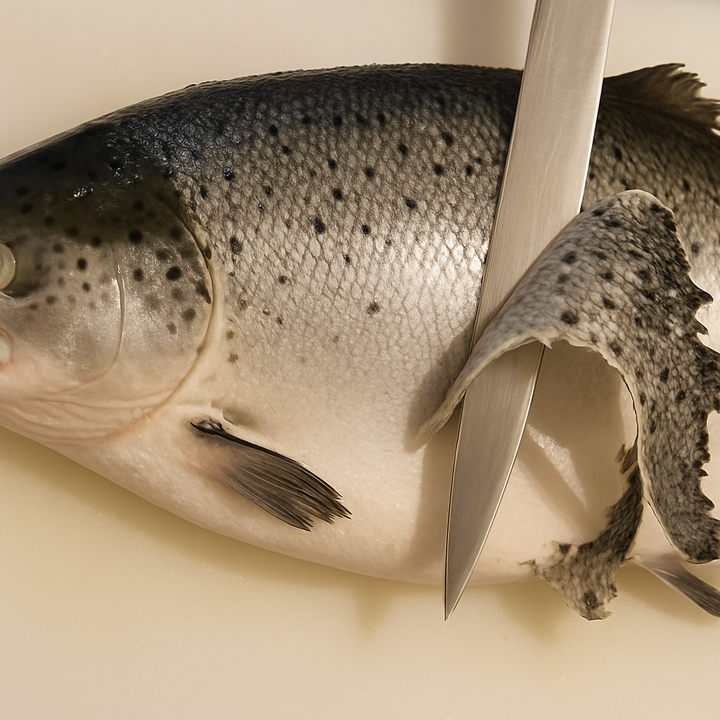Thanksgiving Day Essential Dishes for a Traditional Celebration
Traditional Thanksgiving dishes from roast turkey to pumpkin pie connect Americans to their heritage through shared culinary traditions. Regional variations showcase America's diverse food culture while maintaining the holiday's unifying spirit of gratitude and abundance.

What is Thanksgiving Day?
Thanksgiving Day is an annual national holiday in the United States celebrated on the fourth Thursday of November.
It originated as a harvest festival, with roots tracing back to the 1621 celebration at Plymouth where Pilgrims from England shared a feast with Wampanoag people.
While the holiday's historical narrative has evolved and been reassessed over time, Thanksgiving has become deeply embedded in American culture as a day centered around gratitude, abundance, and family gatherings.
President Abraham Lincoln proclaimed a national Thanksgiving Day in 1863 during the Civil War, officially establishing it as a federal holiday.
Today, Thanksgiving serves as a time when Americans of all backgrounds gather with loved ones, reflect on their blessings, and share a symbolic meal that connects them to both personal and national heritage. The day also marks the unofficial beginning of the winter holiday season in the United States.
The Traditional Feast
Thanksgiving stands as America's great food holiday—a celebration where the meal itself becomes the centerpiece of the gathering.
The traditional Thanksgiving feast represents more than just dinner; it embodies a cultural heritage that connects generations and reflects the agricultural bounty that has sustained America throughout its history.
From the heritage golden-brown turkey to the final slice of pumpkin pie, each dish carries its own story and significance in this quintessentially American celebration.
The Centerpiece: Roast Turkey

No Thanksgiving table is complete without its crowning glory: the roast turkey.
This tradition traces back to the earliest Thanksgiving celebrations, though historical records suggest that waterfowl may have featured more prominently at the first Thanksgiving in 1621.
By the late 1800s, however, turkey had secured its place as the Thanksgiving holiday's defining dish.
The traditional preparation begins with selecting the right Turkey bird—typically allowing one pound per person to ensure leftovers, a cherished part of the Thanksgiving experience.
While conventional roasting remains the most common method, regional variations abound. Southern tables might feature deep-fried turkey, delivering crackling skin and moist meat through a cooking process that takes less than an hour.
New England celebrations might present a bird basted with maple syrup, while Southwestern feasts might incorporate chile-based rubs or glazes.
The roast turkey serves as more than just protein—it functions as the symbolic heart of the meal.
The moment when the turkey arrives at the table often marks the official beginning of the feast, sometimes accompanied by a ceremonial carving that serves as a form of domestic theater unique to this holiday.
Stuffing (or Dressing): Regional Identity on a Plate
Perhaps no Thanksgiving dish better represents America's regional culinary diversity than stuffing—or dressing, as it's known in many Southern households.
This distinction in terminology generally reflects preparation method: "stuffing" traditionally cooks inside the turkey cavity, while "dressing" bakes separately in a casserole dish.
The base ingredients remain remarkably consistent across regions: bread, aromatic vegetables (onions, celery), herbs, stock, and fat.
Yet regional variations transform this simple mixture into distinctive expressions of local identity:
New England stuffing often incorporates Bell's Seasoning (a unique blend created in 1867) and sometimes features oysters, reflecting the region's coastal heritage.
Southern cornbread dressing typically begins with crumbled cornbread rather than white bread and might include sage as its predominant herb.
Midwestern versions might incorporate wild rice, especially in the Upper Midwest, while San Francisco's famous sourdough bread creates a tangy variation unique to the Bay Area.
Stuffing's remarkable adaptability makes it the perfect canvas for family culinary traditions—many households can identify their heritage through distinctive stuffing ingredients passed down through generations.
Cranberry Sauce: The Essential Counterpoint

Cranberry sauce provides the crucial acidic and sweet counterpoint to the richness of other Thanksgiving dishes.
Native to North America, cranberries were likely familiar to the indigenous peoples who participated in the first Thanksgiving, though the sweetened sauce we recognize today developed later.
The sauce appears in two primary forms on American tables. The first is the homemade version, typically combining fresh cranberries, sugar, and often orange juice and zest, simmered until the berries burst and the mixture thickens.
The second is the canned jellied version—sliced into rounds that retain the ridges of the can—which has developed its own nostalgic following since its introduction by Ocean Spray in 1941.
The bright ruby color of cranberry sauce serves an important visual function on the
Thanksgiving plate, providing vibrant contrast to the earth tones of turkey, stuffing, and gravy. Its tart-sweet profile performs an equally important gustatory function, cutting through rich flavors and refreshing the palate between bites.
Mashed Potatoes and Gravy: The Comfort Foundation
Mashed potatoes deliver the comforting foundation upon which many other Thanksgiving flavors build.
This simple preparation—potatoes boiled and mashed with butter, milk or cream, and salt—appears on Thanksgiving tables across America with remarkable consistency.
The key to traditional Thanksgiving mashed potatoes lies in their texture and temperature.
They should maintain some body rather than becoming completely smooth, and they must arrive at the table piping hot.
Many families pass down specific techniques: some swear by Yukon Gold potatoes for their buttery flavor, while others insist on russets for their fluffy texture.
Some families incorporate roasted garlic, while purists reject any flavoring beyond salt, pepper, and butter.
Turkey gravy completes this pairing, ideally made from the drippings of the roasted bird, thickened with flour or cornstarch, and seasoned with herbs that complement the turkey.
The gravy ties together many elements of the plate, unifying diverse flavors and textures through its rich, savory character.
Sweet Potato Casserole: The Sweet-Savory Divide
Sweet potato casserole demonstrates the fascinating sweet-savory balance that characterizes the traditional Thanksgiving menu.
This dish appears in two primary forms across America, highlighting a distinctive culinary divide.
The marshmallow-topped version—sweet potatoes mashed with brown sugar, butter, and spices, then crowned with miniature marshmallows and baked until golden—traces back to the early 20th century when marshmallows became commercially available to home cooks.
The pecan-topped version features similar sweet potato base but replaces marshmallows with a streusel-like mixture of pecans, brown sugar, flour, and butter.
This geographic division often (though not exclusively) follows the Mason-Dixon line, with Southern tables more likely to feature the pecan version.
Both variations maintain the essential character of the dish: a sweet counterpoint to the savory elements of the meal that showcases the American sweet potato, a crop cultivated by indigenous peoples for thousands of years before European contact.
Green Bean Casserole: Mid-Century Americana
Few dishes represent mid-20th century American food traditions as perfectly as green bean casserole.
Created by Campbell's test kitchen in 1955, this combination of green beans, cream of mushroom soup, and crispy fried onions exemplifies the convenience cooking that transformed American kitchens in the post-war era.
Despite its relatively recent origins, green bean casserole has secured its place in the Thanksgiving canon, providing a vegetable side dish that complements the flavor profile of the meal while requiring minimal preparation.
The contrast between the creamy sauce and the crispy onion topping creates a textural interest that helps explain its enduring popularity.
While some contemporary cooks update this classic with fresh green beans, homemade mushroom sauce, and even homemade fried shallots, many families consider the original recipe using canned and packaged ingredients to be an essential taste of nostalgia—a reminder of Thanksgivings past.
Dinner Rolls: Essential Supporting Players
Thanksgiving dinner rolls perform a crucial but often overlooked function: they provide the means to soak up the flavorful juices, gravies, and sauces that make the Thanksgiving plate so distinctive.
The ideal roll combines a tender interior with a slightly crisp exterior, substantial enough to hold up when dipped but not so dense as to compete with the meal's richer elements.
Many families maintain loyalty to particular styles: Parker House rolls (folded over before baking to create a soft pocket), fantan rolls (cut dough stacked in muffin tins to create pull-apart layers), or simple cloverleaf rolls (three small balls of dough placed in muffin cups to form clover shapes).
While some households rely on commercial varieties, Thanksgiving remains one of the few occasions when many Americans still prepare homemade bread.
The aroma of freshly baked rolls contributes to the multisensory experience of the holiday, signaling the approaching meal in a way that touches deep memory and creates anticipation.
Pumpkin Pie: The Essential Finale
Pumpkin pie completes the traditional Thanksgiving meal, incorporating the essential flavors of the harvest season: pumpkin, warming spices, and buttery pastry.
This distinctively American dessert evolved from early English pumpkin puddings, transforming into the custard-filled pie we recognize today by the early 19th century.
The classic preparation combines pumpkin puree with evaporated milk, eggs, sugar, and a distinctive spice blend of cinnamon, ginger, nutmeg, and cloves.
This mixture bakes in a pastry crust until set but still slightly wobbly in the center.
While variations exist—some recipes incorporate brown sugar for deeper flavor, others add bourbon or maple syrup—most Americans recognize the standard version as the quintessential Thanksgiving dessert.
Often served with a dollop of whipped cream, pumpkin pie provides a sweet conclusion that echoes the meal's autumnal themes while remaining light enough to enjoy after a substantial feast.
Its smooth texture and warm spicing create a comforting end to the celebratory meal.
Regional Additions: Beyond the Standards
While the dishes above form the core of traditional Thanksgiving menus nationwide, regional specialties add distinctive character to tables across America:
In New England, pearl onions in cream sauce offers a simple but elegant side dish reflecting the region's historical preference for straightforward preparations of seasonal produce.
The Midwest might include wild rice pilaf, honoring the agricultural heritage of the region and its indigenous roots. Southern tables often feature macaroni and cheese as a standard side dish—a tradition not commonly seen in other regions.
The Southwest might include green chile corn pudding, incorporating the distinctive pepper that defines the regional cuisine.
These regional variations maintain the essential character of Thanksgiving while allowing the celebration to reflect local identity and agricultural heritage.
The Meaning in the Menu
The traditional Thanksgiving menu tells America's story through food. From indigenous ingredients (corn, beans, pumpkin, cranberries) to European cooking techniques, from regional variations to national constants, the meal embodies the complex cultural heritage that defines American foodways.
What makes these dishes "essential" isn't just their flavor or historical precedent—it's their ability to connect generations through shared experience.
When families prepare cranberry sauce from a recipe handed down for generations or carve a turkey using techniques taught by parents and grandparents, they participate in a living tradition that strengthens bonds across time.
The Thanksgiving meal, with its abundance and variety, provides more than physical nourishment. It offers the emotional sustenance of connection—to family, to heritage, and to the seasonal rhythms that have shaped human experience since long before the first
Thanksgiving was celebrated. In this way, these essential dishes nourish both body and spirit, making them truly worthy of their central place in America's cultural calendar.


